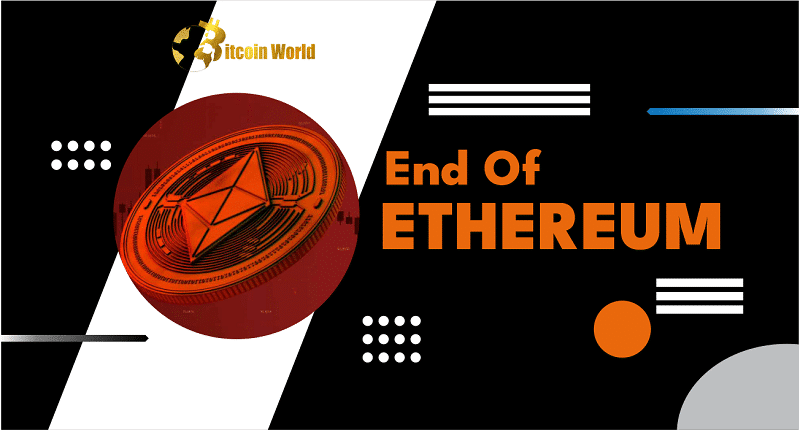Imagine a bustling city where every transaction needs to be officially stamped and approved to be considered valid. Now, picture a sudden event where a significant portion of the officials responsible for this stamping suddenly disappear. That’s a pretty good analogy for what happened on the Ethereum network on May 11th and 12th. A significant portion of Ethereum’s validators, the very entities responsible for confirming transactions, unexpectedly went offline, sparking a critical discussion about something called ‘finality’.
The Ethereum Hiccup: What Exactly Happened?
On those two days, the Ethereum network experienced a peculiar event: a staggering 60% of its validators temporarily ceased operations. This wasn’t a malicious attack, but the sheer scale of the disruption raised eyebrows and led to a ‘loss of finality’. But what does this term actually mean in the world of blockchain?
Finality: The Cornerstone of Trust in Blockchain
Think of ‘finality’ as the point of no return for a transaction on the blockchain. It’s the assurance that once a transaction is confirmed, it’s permanently recorded and cannot be reversed or altered. In technical terms, finality is achieved when a supermajority of validators – specifically, more than two-thirds – agree that a block of transactions is valid and should be added to the blockchain. This consensus is the bedrock of trust and security in decentralized networks.
Why is Finality So Crucial?
- Transaction Security: Finality provides users with the confidence that their transactions are secure and irreversible once confirmed. It eliminates the fear of double-spending or fraudulent alterations.
- Network Reliability: A network with strong finality is a reliable network. It ensures that the history of transactions is accurate and tamper-proof.
- Preventing Double-Spending: Imagine someone trying to spend the same cryptocurrency twice. Finality prevents this by ensuring that once a transaction is final, the funds are locked and cannot be spent again.
- Efficient Dispute Resolution: In case of disputes, finality provides an immutable record of transactions, making resolution more straightforward and transparent.
The Fallout: What Happens When Finality is Lost?
When Ethereum experienced a loss of finality, it meant that the network couldn’t reach the necessary two-thirds validator agreement to confirm new blocks definitively. Transactions were left in a state of limbo, awaiting that crucial confirmation. This situation, while temporary, highlighted the network’s dependence on a robust and active validator set.
The Validator’s Vital Role: The Guardians of the Blockchain
Validators are the unsung heroes of proof-of-stake blockchains like Ethereum. They are responsible for proposing, voting on, and adding new blocks of transactions to the blockchain. To participate, they stake a certain amount of ETH, acting as a financial incentive to act honestly. Their collective agreement is what drives the network forward and ensures its security.
What Caused the Ethereum Finality Issue?
While the exact reasons behind the mass validator outage on May 11th and 12th are still being investigated, it served as a crucial reminder of potential vulnerabilities. Possible contributing factors could include:
- Client Bugs: Software glitches in the validator client software could have caused widespread issues.
- Configuration Errors: Incorrect settings or configurations across a significant number of validators might have led to the outage.
- Infrastructure Issues: Problems with hosting providers or internet connectivity affecting a large group of validators simultaneously.
Moving Forward: Strengthening Ethereum’s Resilience
The events of May 11th and 12th weren’t a fatal blow to Ethereum, but rather a valuable learning experience. The community is actively working on several fronts to prevent similar incidents and enhance the network’s resilience:
- Improving Client Diversity: Encouraging validators to use a variety of client software reduces the risk of a single bug affecting a large portion of the network.
- Enhancing Monitoring and Alerting Systems: Better tools for monitoring validator performance and quickly identifying potential issues are crucial.
- Reviewing Validator Distribution: Ensuring a more geographically diverse and independent validator set can mitigate risks associated with localized infrastructure problems.
The Quest for Unwavering Finality: A Continuous Journey
The pursuit of robust finality is an ongoing process for all blockchain networks. It’s a delicate balance between decentralization, security, and performance. Ethereum’s recent experience highlights the importance of continuous vigilance and adaptation in this rapidly evolving technological landscape.
Key Takeaways: What Does This Mean for You?
- Finality is fundamental: Understand its importance for the security and reliability of blockchain transactions.
- Validator participation is crucial: The health of a proof-of-stake network depends on a robust and active validator set.
- Blockchain technology is evolving: Challenges and learning experiences are part of the growth process.
- Stay informed: Keep up with developments in the cryptocurrency space to understand potential risks and opportunities.
In Conclusion: A Stronger, More Resilient Ethereum
The temporary loss of finality on Ethereum served as a stark reminder of the intricacies and potential challenges within blockchain technology. However, it also showcased the community’s ability to identify, address, and learn from such events. By focusing on improving validator diversity, enhancing monitoring systems, and continuously innovating, the Ethereum ecosystem is working towards a future where finality is not just a concept, but a consistently reliable feature, paving the way for greater trust and adoption of this groundbreaking technology.
Disclaimer: The information provided is not trading advice, Bitcoinworld.co.in holds no liability for any investments made based on the information provided on this page. We strongly recommend independent research and/or consultation with a qualified professional before making any investment decisions.


